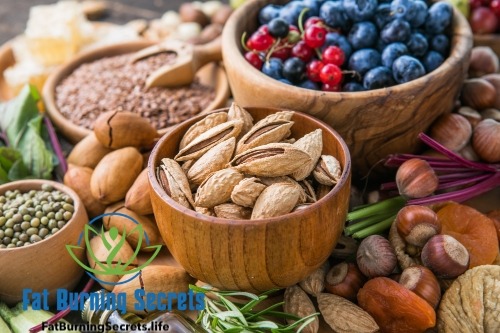Insulin resistance is a metabolic condition in which the body’s cells become less responsive to the hormone insulin. This can lead to elevated blood sugar levels and an increased risk of developing type 2 diabetes and other health complications. Adopting a well-balanced and carefully designed diet plan can play a crucial role in managing insulin resistance and promoting overall health. In this article, we will explore the concept of an insulin resistance diet plan and provide valuable insights into creating a personalized approach to optimize blood sugar levels.

Understanding Insulin Resistance
Insulin is a hormone produced by the pancreas that helps regulate blood sugar levels. In individuals with insulin resistance, the cells in their bodies do not respond effectively to insulin, causing a buildup of glucose in the bloodstream. Over time, this can lead to various health issues, including weight gain, high blood pressure, and cardiovascular diseases.
The Impact of Diet on Insulin Resistance
A well-designed diet can significantly influence insulin sensitivity and help manage insulin resistance. By focusing on key nutrients and making appropriate food choices, individuals can stabilize their blood sugar levels and support their overall health.
Key nutrients and their role
Certain nutrients have a profound impact on insulin sensitivity. These include:
- Fiber: A diet high in fiber aids in slowing down the digestion and absorption of carbohydrates, preventing rapid spikes in blood sugar levels.
- Healthy fats: Incorporating sources of healthy fats, such as avocados and nuts, can help improve insulin sensitivity.
- Lean protein: Consuming lean protein sources, such as fish, poultry, and legumes, supports stable blood sugar levels and promotes satiety.
Foods to include and avoid
To create an effective insulin resistance diet plan, it is essential to include specific foods and limit or avoid others. Foods that should be included in the diet plan are:
- Vegetables: Leafy greens, broccoli, cauliflower, and other non-starchy vegetables are rich in fiber and essential nutrients.
- Whole grains: Opt for whole grains like quinoa, brown rice, and oats, which provide sustained energy and promote stable blood sugar levels.
- Berries: Berries are low in sugar and high in antioxidants, making them an excellent choice for managing insulin resistance.
- Lean proteins: Choose lean sources of protein like chicken breast, turkey, tofu, and beans.
On the other hand, it is advisable to limit or avoid:
- Refined carbohydrates: Highly processed carbohydrates, such as white bread, sugary cereals, and pastries, can lead to rapid blood sugar spikes.
- Added sugars: Minimize the consumption of foods and beverages containing added sugars, such as sodas, candies, and sweetened desserts.
- Trans fats: Avoid trans fats found in processed snacks, fried foods, and commercially baked goods, as they can increase insulin resistance.
Designing an Insulin Resistance Diet Plan
To create an effective insulin resistance diet plan, it is important to focus on the following principles:
Balanced macronutrient intake
Aim for a balanced intake of macronutrients, including carbohydrates, proteins, and fats. Distributing these nutrients evenly throughout the day can help stabilize blood sugar levels. Opt for complex carbohydrates, lean proteins, and healthy fats in appropriate proportions. This is exactly what the “Fat Burning Secrets” diet is all about.
Focus on low glycemic index foods
The glycemic index (GI) is a measure of how quickly a particular food raises blood sugar levels. Choosing low GI foods can help prevent spikes in blood sugar. Some examples of low GI foods include whole grains, legumes, leafy greens, and most fruits.
Incorporating fiber-rich foods
Fiber plays a crucial role in managing insulin resistance. It slows down the absorption of glucose and promotes a feeling of fullness. Include plenty of fiber-rich foods in your diet, such as vegetables, whole grains, nuts, and seeds.
Meal Planning and Sample Meal Ideas
Here are some meal ideas to help you structure your insulin resistance diet plan:
Breakfast options
- Vegetable omelet with spinach, mushrooms, and bell peppers.
- Overnight oats made with rolled oats, chia seeds, almond milk, and topped with berries and a sprinkle of nuts.
- Greek yogurt with sliced almonds and mixed berries.
Lunch and dinner ideas
- Grilled chicken breast served with quinoa and a side of roasted vegetables.
- Baked salmon with steamed broccoli and a quinoa salad.
- Lentil curry with brown rice and a side of sautéed greens.
Snack recommendations
- Carrot sticks with hummus.
- Apple slices with almond butter.
- Greek yogurt with a handful of mixed nuts.
See my “Fat Burning Secrets Cookbook: Macronutrient-Balanced Recipes” for over 200 pages of great balanced recipes.
Other Lifestyle Factors to Consider
In addition to dietary changes, several lifestyle factors can contribute to managing insulin resistance effectively:
Regular exercise routine
Engaging in regular physical activity can improve insulin sensitivity and help maintain a healthy weight. Aim for a combination of cardiovascular exercise and strength training for optimal results.
My book, “Fat Burning Secrets” has a great combination of both resistance and cardiovascular exercises.
Stress management techniques
Chronic stress can negatively impact blood sugar levels and insulin sensitivity. Practice stress management techniques like meditation, yoga, or deep breathing exercises to reduce stress and promote overall well-being.
See my ebook, “Stress Reduction: Learn to Reduce Your Stress for a Healthier and Happier Life.”
Sufficient sleep and hydration
Getting adequate sleep and staying hydrated are essential for maintaining optimal health. Aim for 7-8 hours of quality sleep per night and drink plenty of water throughout the day. Sleep quantity and quality affects all parts of the body and mind. Learn more about the importance of sleep on your health.
Tracking Progress and Making Adjustments
It’s important to monitor your blood sugar levels regularly and consult with a healthcare professional. They can provide guidance and make adjustments to your insulin resistance diet plan based on your specific needs and goals.
Learn how to track, monitor and adjust macros for your body type and lifestyle.
Conclusion
An insulin resistance diet plan plays a crucial role in managing blood sugar levels and promoting overall health. By focusing on balanced macronutrient intake, low glycemic index foods, and fiber-rich options, individuals can optimize their insulin sensitivity. Incorporating regular exercise, stress management techniques, and healthy lifestyle habits further enhances the effectiveness of the diet plan. Remember to consult with a healthcare professional for personalized advice and guidance.


